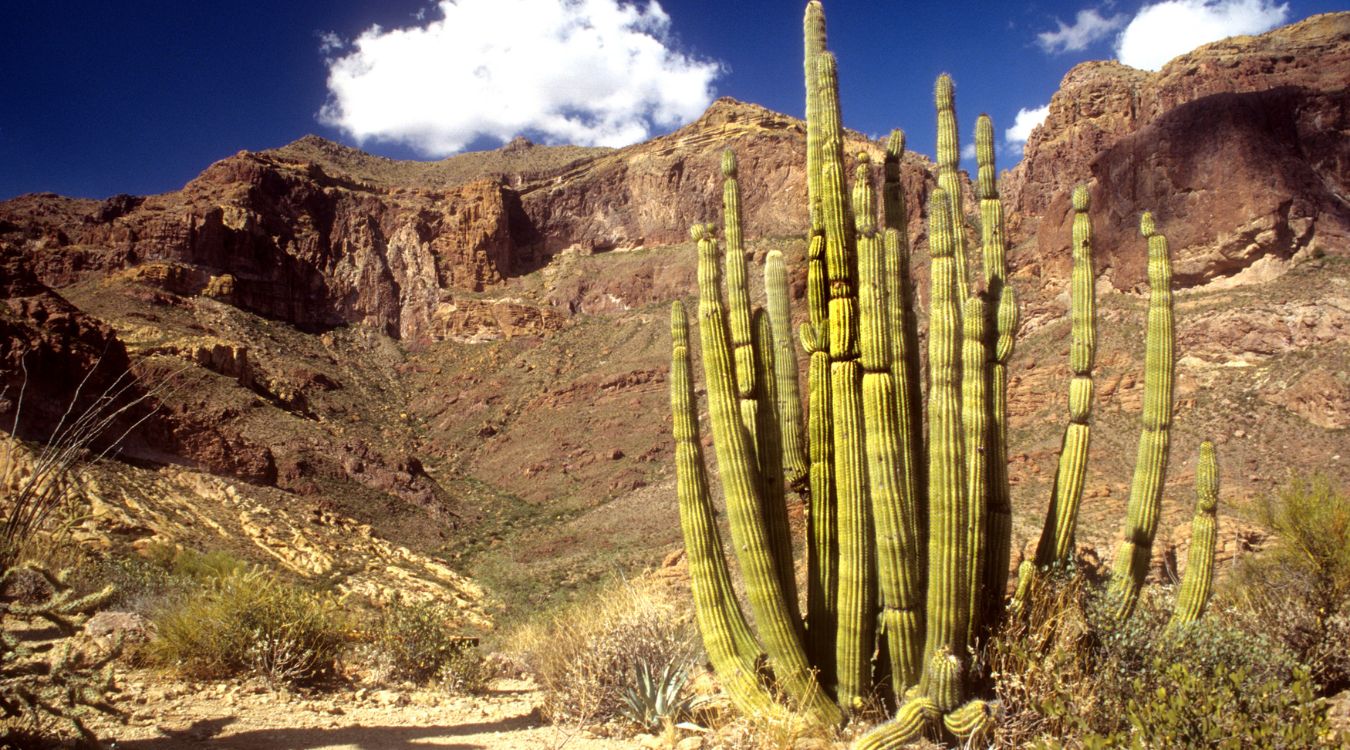Secrets Of Arizona’s Organ Pipe Cactus Forests

Have you ever wondered what makes Arizona's Organ Pipe Cactus forests so special? These unique landscapes, found in the Sonoran Desert, are home to the rare and striking Organ Pipe Cactus. This cactus, with its tall, pipe-like arms, can grow up to 25 feet tall and live for over 150 years. The forests are not just about cacti; they also host diverse wildlife like desert bighorn sheep, javelinas, and various bird species. Visiting these forests offers a chance to see stunning sunsets, explore rugged trails, and experience the serene beauty of the desert. Ready to learn more about this natural wonder?
Discovering the Organ Pipe Cactus National Monument
Arizona's Organ Pipe Cactus National Monument is a hidden gem in the Sonoran Desert. This UNESCO biosphere reserve is home to unique flora and fauna, including the rare organ pipe cactus. Let's explore some must-see spots within this stunning landscape.
- Ajo Mountain Drive
This 21-mile scenic loop offers breathtaking views of the desert landscape. Along the way, you'll encounter towering organ pipe cacti, rugged mountains, and diverse wildlife. Perfect for a leisurely drive or a more adventurous bike ride.
- Arch Canyon Trail
For those who love hiking, Arch Canyon Trail is a must. This 1.2-mile trail leads to a natural arch formation, providing stunning vistas of the surrounding desert. Keep an eye out for bighorn sheep and other desert dwellers.
- Kris Eggle Visitor Center
Named after a fallen park ranger, this visitor center offers educational exhibits about the monument's natural and cultural history. It's a great starting point to learn more about the unique ecosystem and plan your visit.
Unique Flora and Fauna
The Organ Pipe Cactus National Monument is not just about the cacti. The diverse ecosystem supports a variety of plant and animal species. Here are some highlights.
- Senita Basin
This area is home to the rare senita cactus, which is found in very few places in the United States. The basin also features a variety of other desert plants and is a great spot for birdwatching.
- Quitobaquito Springs
An oasis in the desert, Quitobaquito Springs is a vital water source for wildlife. The springs attract a variety of birds, including the endangered Sonoran pronghorn. It's a peaceful spot to relax and enjoy nature.
- Desert View Trail
This short, easy trail offers panoramic views of the desert landscape. Along the way, you'll see a variety of cacti, including the iconic saguaro and organ pipe. It's a great trail for families and those looking for a quick hike.
Cultural and Historical Sites
The monument also has a rich cultural history, with evidence of human habitation dating back thousands of years. Here are some places where you can learn more about the area's past.
- Gachado Line Camp
This historic site was once a cattle ranching operation. Today, you can explore the remains of the old line camp and learn about the challenges faced by early settlers in the harsh desert environment.
- Victoria Mine
One of the oldest mines in the area, Victoria Mine offers a glimpse into the region's mining history. The 5-mile round-trip hike to the mine is moderately challenging but rewards visitors with fascinating historical insights and beautiful desert scenery.
- Estes Canyon and Bull Pasture Trail
This trail offers a mix of natural beauty and historical significance. The 3.5-mile loop takes you through Estes Canyon, where you can see ancient petroglyphs, and up to Bull Pasture, which offers stunning views of the surrounding mountains and valleys.
Stargazing in the Desert
The remote location of the Organ Pipe Cactus National Monument makes it an ideal spot for stargazing. With minimal light pollution, the night sky here is truly spectacular.
- Twin Peaks Campground
This campground is a favorite among stargazers. Set up your tent or park your RV and enjoy a night under the stars. The clear desert skies provide an excellent opportunity to see constellations, planets, and even the Milky Way.
- Alamo Canyon Campground
For a more secluded experience, head to Alamo Canyon Campground. This primitive campground offers a peaceful setting for stargazing. Bring a telescope or simply lie back and enjoy the celestial show.
Tips for Visiting
Before you head out to explore the Organ Pipe Cactus National Monument, here are some tips to make your visit enjoyable and safe.
- Stay Hydrated
The desert can be extremely hot and dry, so it's important to drink plenty of water. Carry more water than you think you'll need, especially if you're hiking or biking.
- Wear Sun Protection
Protect yourself from the sun by wearing a hat, sunglasses, and sunscreen. Lightweight, long-sleeved clothing can also help shield your skin from the sun's rays.
- Respect Wildlife
The monument is home to many species of wildlife. Observe animals from a distance and do not feed them. Keep your food and trash secured to avoid attracting animals to your campsite.
Discover the Magic of Organ Pipe Cactus Forests
Arizona's Organ Pipe Cactus Forests offer a unique blend of natural beauty and adventure. These forests, home to the rare organ pipe cactus, provide a stunning backdrop for hiking, photography, and wildlife spotting. The Sonoran Desert landscape, with its diverse flora and fauna, invites exploration and appreciation.
Visiting these forests isn't just about seeing cacti. It's about experiencing the desert's ecosystem, understanding its delicate balance, and feeling a connection to nature. Whether you're an avid hiker, a nature lover, or someone seeking a peaceful retreat, the Organ Pipe Cactus Forests have something special to offer.
Plan your trip, pack your essentials, and get ready to immerse yourself in one of Arizona's natural wonders. The beauty and tranquility of these forests will leave you with lasting memories and a deeper appreciation for the desert's unique charm.

